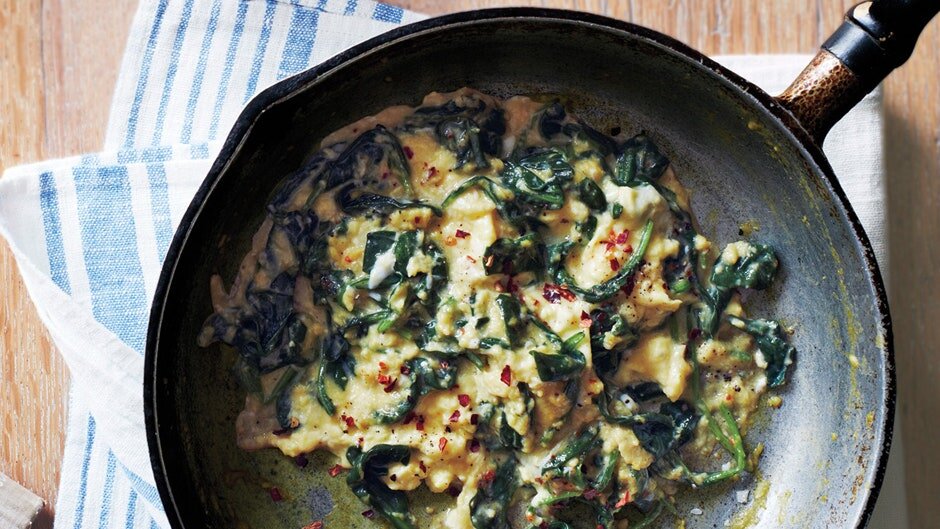I have to give my husband credit for this one. He makes the BEST soups. This one is so good it's become a part of our Thanksgiving (and Christmas) tradition - yet it's easy enough to make for a nutritious week night meal! So warm, so flavourful, and so easy to cook. Top it off with some olive oil and sea salt sourdough croutons. Mmmm, so good!
Butternut Squash Soup with Olive Oil & Sea Salt Croutons
6 Servings
I like to serve this soup with 4 or 5 croutons in the middle. Top the croutons with sour cream and chives and a bit more pepper.
Ingredients
1 medium squash, winter, butternut, raw
2 medium potato
1 medium onion, raw
2 tbsp butter
3 clove garlic, raw
3 cups (24 fl oz) chicken broth, ready to use, reduced salt, just enough to cover the veggies
1 dash black pepper
1 dash salt
1/2 tsp spices, paprika
1 leaf spices, bay leaf
1/2 cup, shredded (2.1 oz) cheddar cheese
6 tbsp sour cream
3 tbsp chives, raw
Directions
1. Heat and melt the butter in a medium pot, on medium heat.
2. Peel squash and take out the seeds and membrane. Chop it into small cubes.
3. Peel and chop potatoes and onion. Cut potatoes and butternut squash into cubes that are the same size. Add onion to the pot and saute until transparent.
4. Add potatoes, pressed (or minced) garlic, and butternut squash. Add paprika, salt, and pepper and saute for 5-10 minutes, stirring occasionally. Add just enough stock to cover the veggies. Cook until veggies are fully cooked and tender, about 20 minutes. (Time may vary depending on how small you cut potatoes and squash.)
5. Take out the bat leaf and discard. Slowly transfer content of the pot into a food processor, make sure to crack the lid to let the steam out. Blend well and return to the pot. When cheese is melted, soup is all done.
6. Serve with a dollop of soup cream, chives, and croutons.
Nutrition Facts
Per 1 Serving Calories 210 Total Fat 9.08g Saturated Fat 5.657g Trans Fat 0.223g Cholesterol 26mg Sodium 319mg Total Carbohydrate 27.81g Fibre 2.9g Sugar 4.12g Protein 6.84g Vitamin A 432 Vitamin C 37.7 Calcium 161 Iron 1.51
Sourdough Croutons
4 Servings
Ingredients
2 slice, sourdough bread, toasted
1 tbsp olive oil
1 dash sea salt
Directions
1. Cut sourdough slice into 8 or 10 pieces.
2. Put on parchment paper/baking sheet and drizzle with olive oil.
3. Put oven on 300 F.
4. After 10 or so minutes take it out of the oven and again drizzle it with olive oil. Put it back in the oven for 5 or so minutes.
5. Take croutons out and sprinkle with sea salt.
Enjoy :)
Dani












